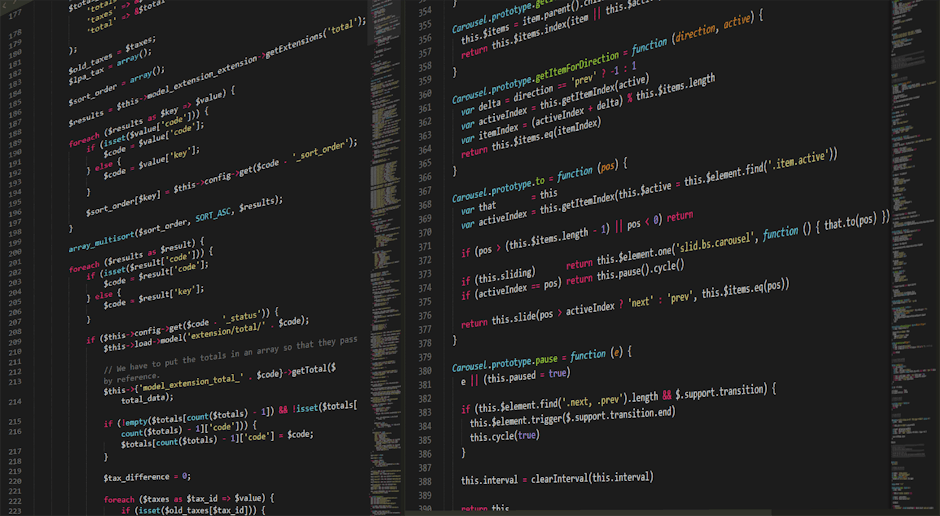
In the dynamic world of mobile technology, businesses are constantly seeking ways to reach a wider audience efficiently and cost-effectively. Cross-platform frameworks have emerged as a compelling solution, allowing developers to write a single codebase that can be deployed across multiple operating systems like iOS and Android. This approach significantly reduces development time and costs, making it particularly attractive for companies and App Development New Jersey firms looking to maximize their market reach without sacrificing quality or scalability.
However, choosing the right cross-platform framework for a scalable application is critical. Scalability refers to an app’s ability to handle increasing user loads, data volumes, and functional complexity without compromising performance or stability. Not all frameworks are created equal when it comes to meeting these demanding requirements.
Here are the best 7 cross-platform frameworks for scalable app development in 2025:
1. Flutter
What it is: Developed by Google, Flutter is an open-source UI software development kit that allows developers to build natively compiled applications for mobile, web, and desktop from a single codebase. It uses Dart as its programming language.
- Why it’s Scalable:
- Native Performance: Flutter compiles directly to native ARM code, delivering near-native performance that can handle complex animations and high data loads efficiently. Its Skia graphics engine allows for pixel-perfect UI rendering, which is crucial for maintaining responsiveness as an app scales.
- Widget-Based Architecture: Everything in Flutter is a widget. This modular, composable approach makes it easy to build complex UIs, and add new features without disrupting existing ones, ensuring maintainability and scalability.
- Hot Reload & Hot Restart: These features significantly speed up the development cycle, allowing developers to iterate quickly and efficiently. This is vital for large, evolving projects where rapid prototyping and bug fixing are essential for keeping up with market demands.
- Strong Community and Google Support: A rapidly growing community and robust backing from Google mean continuous improvements, a wealth of resources, and a thriving ecosystem of packages and plugins to extend functionality.
- Use Cases for Scalability: E-commerce apps with rich UIs, social media platforms, complex business applications, and apps requiring custom animations or graphics.
2. React Native
What it is: Created by Meta (Facebook), React Native is an open-source framework that allows developers to build mobile applications using JavaScript and React. It renders UI components using native UI components, giving it a native look and feel.
- Why it’s Scalable:
- JavaScript Familiarity: Leveraging JavaScript, one of the most widely used programming languages, means a vast pool of developers can quickly contribute to large-scale projects.
- Modular Component Structure: React Native’s component-based approach promotes reusability and maintainability, allowing for the independent development and scaling of different parts of an application.
- Strong Ecosystem and Community: A massive and mature community offers extensive libraries, tools, and third-party integrations, which are crucial for extending functionality and solving complex problems in scalable applications.
- Code Reusability (Web to Mobile): For companies with existing React web applications, a significant portion of the code logic can often be reused for mobile, accelerating development and maintaining consistency across platforms.
- Use Cases for Scalability: Social networking apps, e-commerce platforms, content management systems, and apps requiring rapid prototyping and deployment.
3. Xamarin (.NET MAUI)
What it is: Acquired by Microsoft, Xamarin is a framework for building cross-platform applications using C# and .NET. It allows developers to share up to 90% of code across platforms while still delivering native-like performance and UI. Its successor, .NET Multi-platform App UI (.NET MAUI), is the evolution for building cross-platform apps with a single .NET codebase.
- Why it’s Scalable:
- .NET Ecosystem Integration: For enterprises heavily invested in Microsoft technologies and the .NET ecosystem, Xamarin/MAUI offers seamless integration with existing tools, libraries, and backend services.
- Native API Access: Provides full access to native APIs and UI toolkits, enabling developers to build highly customized and performant applications that can tap into device-specific features, crucial for complex, scalable enterprise solutions.
- Strong Enterprise Support: Backed by Microsoft, it offers robust documentation, enterprise-grade support, and a commitment to long-term development, making it a reliable choice for large-scale projects.
- High Code Reusability: Developers can achieve substantial code reuse across iOS, Android, macOS, and Windows, streamlining development and maintenance for scalable applications.
- Use Cases for Scalability: Enterprise applications, business-to-business (B2B) solutions, apps requiring deep integration with existing Microsoft infrastructure, and apps with complex data processing needs.
4. Kotlin Multiplatform Mobile (KMM)
What it is: KMM is an SDK from JetBrains (the creators of Kotlin) that allows developers to share common code (like business logic, data models, networking) across iOS and Android applications, while still allowing for native UI development for each platform.
- Why it’s Scalable:
- Shared Logic, Native UI: This unique approach offers the best of both worlds for scalability. Developers get the efficiency of shared code for the core logic, while retaining the flexibility and performance of building platform-specific UIs. This is ideal for complex apps where pixel-perfect native UI is critical.
- Kotlin Benefits: Kotlin is a modern, concise, and expressive language that is fully interoperable with Java, making it easy to integrate with existing Android codebases and libraries.
- Growing Ecosystem: While newer than some alternatives, KMM is rapidly gaining traction with strong backing from JetBrains and a growing community, offering promising long-term scalability.
- Access to Native Features: KMM allows direct access to native APIs and functionalities on both iOS and Android, ensuring no compromise on performance or feature set as the app scales.
- Use Cases for Scalability: Apps requiring high performance and native feel (e.g., banking, health, social media), complex business logic shared across platforms, and projects that want to maximize code reuse without fully sacrificing native UI.
5. Ionic
What it is: Ionic is an open-source UI toolkit for building performant, high-quality mobile and desktop apps using web technologies (HTML, CSS, JavaScript) and frameworks like Angular, React, or Vue.js. It leverages web views to render the application.
- Why it’s Scalable:
- Web Developer Friendly: Its reliance on standard web technologies makes it highly accessible to a vast pool of web developers, speeding up team onboarding and development.
- Rapid Prototyping: Ionic’s rich library of pre-built UI components and a strong CLI (Command Line Interface) allow for incredibly fast prototyping and MVP development, which can be quickly scaled up.
- Progressive Web App (PWA) Support: Ionic excels at building PWAs, which are web applications that behave like native apps. This provides an additional scalable distribution channel beyond app stores.
- Capacitor Integration: Ionic now uses Capacitor (a cross-platform native runtime) instead of Cordova by default, offering better access to native device features and improved performance for hybrid apps, crucial for scalability.
- Use Cases for Scalability: Internal business tools, content-heavy apps, progressive web apps, and applications where rapid time-to-market and broader web compatibility are key.
6. React Native for Web / Expo
What it is: While React Native focuses on mobile, combining it with React Native for Web (which allows running React Native components on the web) and tools like Expo (which simplifies React Native development and deployment) creates a powerful ecosystem for truly universal apps.
- Why it’s Scalable:
- Single Codebase for Web & Mobile: This combination allows for maximum code reuse across web, iOS, and Android, significantly reducing development and maintenance overhead for large-scale platforms.
- Expo’s Managed Workflow: Expo streamlines the development process, handles native module linking, and simplifies build pipelines, allowing developers to focus on features and scale the application without deep native expertise.
- Component-Based & Modular: Inherits React’s component-based nature, promoting modularity and reusability, which are fundamental for building scalable applications.
- Large Ecosystem: Benefits from the extensive React and React Native ecosystems, offering a vast array of libraries and tools.
- Use Cases for Scalability: Apps requiring a consistent experience across web and mobile, startups needing to rapidly iterate, and projects where web presence is as important as native mobile apps.
7. Node.js (as a Backend for Cross-Platform Mobile)
What it is: While not a mobile UI framework itself, Node.js is a crucial backend technology for building scalable cross-platform mobile applications. It’s a JavaScript runtime environment that allows developers to build fast, scalable network applications.
- Why it’s Scalable:
- Asynchronous & Event-Driven: Node.js uses a non-blocking, event-driven I/O model, making it highly efficient for handling a large number of concurrent connections – essential for a scalable mobile app backend.
- Unified Language (Full-Stack JavaScript): For teams proficient in JavaScript (common with React Native and Ionic), using Node.js for the backend allows for a single language across the entire stack, simplifying development, maintenance, and talent acquisition.
- Microservices Architecture: Node.js is well-suited for building modular, scalable microservices architectures, enabling individual services to be developed, deployed, and scaled independently.
- Large Ecosystem (NPM): The npm ecosystem provides a vast collection of packages and tools for everything from database integrations to real-time communication.
- Use Cases for Scalability: Real-time applications (chat, live tracking), APIs for mobile apps, streaming services, and any application requiring a highly performant and scalable backend to support a growing user base. While not a cross-platform UI framework, its role in enabling scalable cross-platform mobile apps is undeniable.
Choosing the Right Framework for Your App Development New Jersey Project
Selecting the best cross-platform framework for a scalable app is not a one-size-fits-all decision. For businesses engaging an App Development New Jersey firm, the choice will depend on several factors:
- Project Complexity & Scope: For highly complex apps with specific performance or native UI requirements, Flutter, React Native, or KMM might be preferred. For simpler apps or PWAs, Ionic could be ideal.
- Team Expertise: If your development team or the App Development New Jersey partner has strong expertise in JavaScript/React, React Native or Ionic would be a natural fit. For C#/.NET shops, Xamarin/MAUI is logical.
- Performance Requirements: While all listed frameworks offer good performance, apps requiring absolute native-level speed or highly custom UIs might lean towards Flutter or KMM (with native UI).
- Budget and Time-to-Market: Cross-platform development generally offers cost and time efficiencies. Frameworks with hot reload (Flutter, React Native) further accelerate the development cycle.
- Ecosystem and Community Support: A vibrant community and rich ecosystem of libraries and tools can significantly speed up development and provide solutions to common challenges, crucial for long-term scalability and maintenance.
Conclusion
The appeal of cross-platform development for scalable mobile applications continues to grow, driven by the need for efficiency and broader market reach. In 2025, frameworks like Flutter, React Native, Xamarin/.NET MAUI, Kotlin Multiplatform Mobile, Ionic, and the power of Node.js for backend support offer robust solutions for building applications that can withstand increasing demands. For businesses, particularly those seeking expert guidance from an App Development New Jersey company, a thorough understanding of these frameworks’ strengths and weaknesses is essential. By carefully aligning the project’s specific needs with the capabilities of the chosen framework, developers can build high-performing, maintainable, and truly scalable mobile applications that drive business success for years to come.







